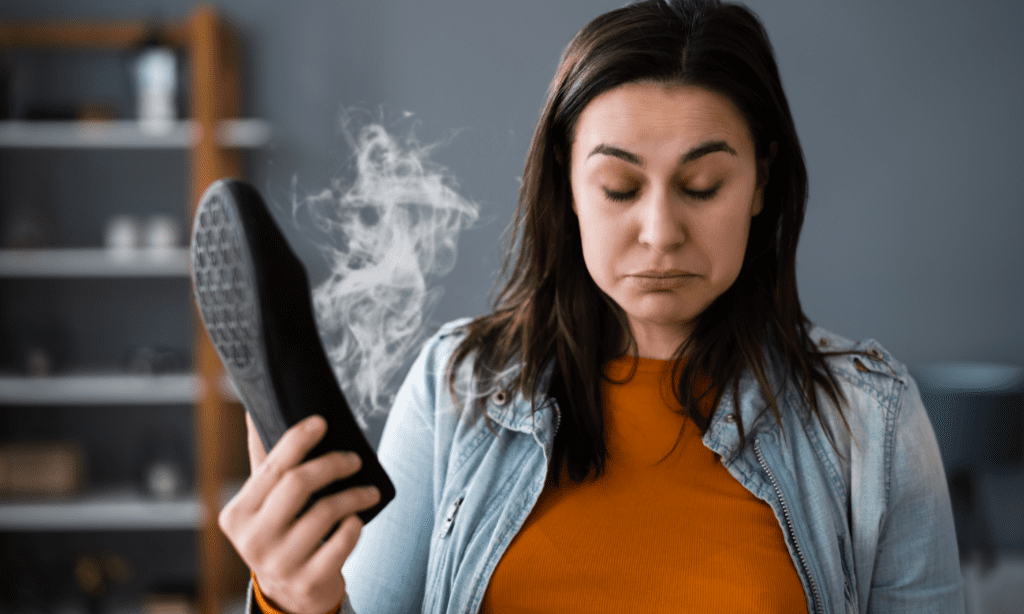Have you come across the term ‘chroming’ and wondered about What Is Chroming? Chroming, also referred to as inhalant abuse, represents a perilous trend characterized by the inhalation of toxic substances for recreational purposes.
This comprehensive guide offers valuable insights into this harmful practice, elucidating its risks and providing guidance on recognizing its telltale signs. Stay with us as we delve deeper into the realm of chroming, as understanding it may potentially save lives.
- Chroming, or inhalant abuse, involves inhaling toxic substances to induce a state of euphoria.
- Common inhalants used in chroming encompass household chemicals like glue, paint, and car exhaust fumes.
- Chroming presents significant threats to both physical and mental well-being, including the risk of organ damage and respiratory issues.
- It is imperative for parents to engage in open and non-judgmental dialogues with their children regarding the perils associated with chroming and to seek assistance when necessary.
Definition of Chroming

Chroming also referred to as “huffing” or “sniffing,” involves inhaling the vapors of household chemicals or aerosol sprays with the aim of inducing a high. This practice utilizes toxic substances commonly found at home, such as glue, paint, or car fuel, in an attempt to experience a state of intoxication or exhilaration. However, it is essential to note that this act is extremely perilous and can lead to severe harm.
Inhalant Abuse and Its Hazards
Inhalant abuse, commonly known as chroming, presents significant risks to both physical and mental health. Prolonged use of these harmful substances can result in anxiety, depression, and substance use disorders. Even more concerning, it can cause damage to vital organs, including the liver, and hearing impairment due to long-term misuse. Inhalants can also induce breathing difficulties leading to asphyxia and potential brain damage. Additionally, they contain psychoactive properties that can alter mental functioning, despite their seemingly harmless nature.
Why is Chroming Trending?

Chroming has gained popularity due to several factors, including the influence of social media, the accessibility of inhalants, and the desire for immediate effects.
Social Media Influence
Chroming is prevalent on various social media platforms, garnering numerous likes and shares daily. This exposure attracts curious individuals, particularly young people, who may be enticed to try it. This rapid trend growth is a cause for concern among experts, as they fear for the safety of youngsters who may not fully comprehend the dangers associated with chroming, as they primarily learn about it online.
Accessibility of Inhalants
Inhalants commonly used in chroming, such as nitrous oxide, are readily available in everyday household products like aerosol sprays and cleaning agents. This accessibility makes experimentation with these substances tempting. However, it is crucial to emphasize that there is no safe or risk-free way to engage in chroming or inhalant abuse, given the severe dangers involved.
Desire for Quick Effects
Chroming has become a trending activity, especially among young individuals, driven by the desire for rapid, intense effects. Participants seek immediate highs and exhilarating sensations. This longing for instant gratification may explain why chroming has gained traction on platforms like TikTok, where users continuously search for novel and stimulating experiences. Nonetheless, it is essential to recognize that while chroming’s effects may be swift, they can also be extremely hazardous to both physical and mental well-being.
Risks of Chroming
Chroming carries substantial risks to both physical and mental health, as well as potential legal repercussions.
- Physical Health Risks: Using inhalants for chroming poses severe physical health risks, including damage to the liver, kidneys, brain, heart, nerves, and respiratory system. It can also affect the bone marrow, which plays a crucial role in producing blood cells.
- Mental Health Risks: Regular inhalant use, such as chroming, can lead to mental health issues such as seizures, coma, hallucinations, Central Nervous System (CNS) depression, impulsive behavior, and other disorders.
- Legal Consequences: Engaging in chroming or inhalant abuse can result in legal consequences, as authorities consider it a form of substance misuse. Those caught in this behavior may face criminal charges, fines, probation, or imprisonment. It is vital for parents and caregivers to be vigilant about the signs of chroming and seek help if they suspect a loved one’s involvement to prevent potential legal issues.
Recognizing Inhalant Abuse and Overdose
Inhalant abuse can manifest through various behavioral shifts and physical symptoms, including mood swings, irritability, hallucinations, dizziness, headaches, and nausea. Identifying these signs early is crucial to prevent potential overdose or lasting health issues.
Behavioral Changes
Inhalant abuse may lead to behavioral alterations, encompassing:
- Depression
- Paranoia
- Hostility
- Reduced concentration
- Confusion
- Irritability
Physical Symptoms
Physical manifestations of inhalant abuse might encompass:
- Slurred speech
- Lightheadedness
- Drowsiness
- Unusual breath odor
- Red eyes
- Nausea and vomiting
- Runny nose
- Headaches
- Dizziness
- Mental numbness
- Stains on clothing or face
Overdose Warning Signs
Inhalant overdose signals can be severe and should not be disregarded. If someone you know exhibits these indicators while using inhalants, it may suggest an overdose:
- Hallucinations: Perceiving nonexistent sights or sounds.
- Drowsiness: Excessive tiredness or difficulty staying awake.
- Coma: Loss of consciousness and unresponsiveness.
- Irregular heartbeat: Heart rate abnormalities, either too fast or too slow.
- Chest pain: Sharp or uncomfortable chest sensations.
- Nausea and vomiting: Feeling queasy and throwing up.
- Diarrhea: Frequent loose or watery bowel movements.
- Confusion or disorientation: Struggling with clear thinking or understanding the situation.
Initiating Conversations About Chroming with Children
Parents can effectively address chroming with their children through open, non-judgmental communication, education about its perils, establishing clear boundaries and expectations, and seeking help and support when necessary.
Open and Non-judgmental Communication
Parents wield a pivotal role in broaching the subject of chroming with their children. Fostering an environment where youngsters feel free to discuss their experiences and emotions is vital. This facilitates recognizing chroming signs and educating kids about its risks. Open communication also streamlines the process of seeking help and support when required.
Parents should realize that non-judgmental dialogues can substantially impact the prevention and management of chroming among young individuals.
Education about the Dangers
Educating children and teenagers about the dangers of chroming is paramount. Furnishing them with insights into the adverse effects of inhaling solvents or household chemicals helps them comprehend the risks involved.
Chroming can trigger severe physical health complications such as heart attacks, seizures, suffocation, and coma. It may also inflict lasting harm on the brain and heart, leading to organ failure and sudden sniffing death. By imparting knowledge about these hazards, young people are empowered to make informed choices prioritizing their well-being.
Setting Clear Boundaries and Expectations
Parents should establish unequivocal boundaries and expectations when discussing chroming with their children. Defining what behaviors are acceptable or not aids in averting inhalant abuse. These boundaries also elucidate potential risks and consequences tied to chroming. Through open, non-judgmental dialogues, parents can emphasize the perils of chroming while offering guidance and support.
Instructing children about boundaries safeguards them from harm and bolsters social development by instilling empathy, self-awareness, and respect for others.
Seeking Help and Support
If there are suspicions that a child is involved in chroming or inhalant abuse, prompt action is crucial. Remember, you don’t have to tackle this alone.
Reach out to professionals like counselors, therapists, or addiction specialists who can furnish guidance and assistance. Support groups are available for parents facing similar challenges. Seeking help early can make a substantial difference in helping your loved one combat chroming and prevent further harm.
Dangers Associated with Chroming
Chroming, also known as inhalant abuse, presents significant risks to both physical and mental health, and it can potentially lead to addiction. To gain a deeper understanding of the harmful effects of inhalant abuse and how to prevent it, continue reading this comprehensive guide.
Toxicity of Inhalants
Inhalants used in chroming can be highly toxic and perilous. These substances contain chemicals that, when inhaled, exert harmful effects on the body. It’s crucial to emphasize that there is no safe level of inhalant use; even a single instance can result in severe health consequences.
Inhalants have the potential to inflict damage on vital organs such as the liver and brain. Prolonged misuse of inhalants can lead to hearing loss, bone marrow problems, and even irreversible brain damage. It’s essential to recognize that combining inhalants with other substances or medications can yield unpredictable and potentially life-threatening outcomes.
Given the toxicity of these substances, it is paramount to completely avoid their misuse in order to safeguard one’s health and overall well-being.
Preventing Chroming and Raising Awareness
The prevention of chroming can be achieved through a multifaceted approach that involves schools, parents, and community awareness campaigns. Here are some strategies to address this issue:
School Initiatives and Resources
Educational institutions play a pivotal role in preventing chroming and inhalant abuse among students. They implement various programs and resources, including:
-
Education programs: Schools offer educational programs that enlighten students about the hazards of chroming and inhalant abuse. These programs educate students about the associated risks, warning signs, and potential consequences of inhalant use.
-
Guest speakers: Schools invite guest speakers, such as addiction counselors or individuals with lived experiences, to share their stories and educate students about the detrimental effects of chroming.
-
Peer support groups: Some schools establish peer support groups, providing students with a safe environment to discuss concerns related to substance abuse, seek assistance, and support one another.
-
Counseling services: Schools provide counseling services to students grappling with addiction issues or seeking information about chroming. Trained counselors offer guidance and support to those in need.
-
Awareness campaigns: Schools organize awareness campaigns to engage the entire school community in combatting chroming. These campaigns encompass workshops, assemblies, and creative activities aimed at raising awareness about inhalant abuse.
-
Collaboration with parents: Schools work collaboratively with parents to effectively address chroming issues. They encourage open communication between parents and children, ensuring parents are well-informed about the risks and can actively support their child’s well-being.
-
Referral networks: Schools maintain strong connections with local healthcare services and addiction treatment centers, allowing them to refer students in need of additional support or rehabilitation.
Parental Involvement and Monitoring
Parents play an indispensable role in preventing chroming among teenagers. Active involvement and vigilant monitoring of their children can ensure their safety and well-being. This involvement encompasses open and non-judgmental communication with their kids about the perils of chroming.
Parents should educate their children about the risks linked to inhalant abuse, which encompasses physical health risks, mental health risks, and legal repercussions. Setting clear boundaries and expectations concerning substance use is also crucial, and parents should seek help or support when necessary.
Research has demonstrated that parental involvement significantly contributes to prevention efforts aimed at combating chroming among teenagers.
Community Awareness Campaigns
Community awareness campaigns are instrumental in disseminating knowledge about the dangers of chroming, particularly among young individuals. These campaigns strive to heighten awareness regarding the health consequences and risks associated with inhalant abuse.
Educational institutions have intensified their efforts to prevent chroming-related tragedies by targeting both Aboriginal and non-Aboriginal children through community-based initiatives. The ultimate objective is to educate and inform, ultimately deterring inhalant abuse within these communities.
Seeking Treatment and Support
Individuals grappling with chroming can access treatment and support through various avenues, including specialized programs for inhalant abuse, support groups, counseling services, and comprehensive recovery plans designed to prevent relapse.
Treatment Options for Inhalant Abuse
Effective treatment is pivotal for individuals’ health and well-being. Here are some treatment options available:
-
Detoxification: This initial step focuses on eliminating toxins from the body, setting the stage for treatment.
-
Inpatient rehabilitation: This form of treatment involves individuals staying in a specialized facility where they receive round-the-clock care and support. It encompasses therapy sessions, skill acquisition for coping, and efforts toward recovery.
-
Outpatient programs: These programs enable individuals to receive treatment while residing at home. They involve regular attendance at therapy sessions and group meetings.
-
Cognitive-behavioral therapy (CBT): CBT aids individuals in recognizing negative thought patterns and behaviors associated with substance abuse. The focus is on transforming these patterns to encourage healthier choices.
-
Support groups: Participation in support groups offers individuals a sense of community and understanding. They can share experiences, learn from others, and garner support on their journey to recovery.
-
Medication-assisted treatment (MAT): In certain instances, medication may be prescribed to help manage withdrawal symptoms or cravings during the recovery process.
Support Groups and Counseling
Support groups and counseling cater to individuals in search of treatment and support for addiction, caregiving responsibilities, and various mental health conditions. Here are key aspects of these support systems:
-
Therapy groups encompass a broad spectrum of mental health conditions, offering support and guidance.
-
Peer support groups integrated into addiction treatment have demonstrated efficacy in reducing substance use, enhancing engagement, and mitigating HIV transmission.
-
Support groups provide a platform for individuals confronting similar challenges to connect, share experiences, and offer advice. Additionally, you can also read about Ashwagandha Benefits for Men
Recovery and Relapse Prevention
Recovery from chroming and the prevention of relapse represent ongoing processes. To aid in these endeavors, consider the following steps:
-
Acknowledge that relapse is a gradual process characterized by stages.
-
Actively engage in your recovery journey to deter relapse.
-
Collaborate closely with a therapist or counselor to develop an aftercare plan.
-
Seek support through support groups or individual counseling sessions.
-
Acquire healthy coping mechanisms and strategies for managing cravings or triggers.
-
Maintain a connection with a supportive community comprising friends, family, and peers who comprehend your challenges.
-
Persist with regular therapy sessions, even after feeling better, to sustain progress.
-
Embrace self-care activities such as exercise, hobbies, and relaxation techniques to alleviate stress.
-
Remain vigilant for potential signs of relapse and address them promptly.
Frequently Asked Questions (FAQs)
Now, let’s address some common questions on this topic.
What is chroming?
Chroming refers to the practice of inhaling chemicals, such as spray paint or aerosol cans, with the intention of achieving a high or altered state.
Is chroming dangerous?
Yes, chroming is exceedingly perilous and carries severe health risks, including brain damage, organ failure, and even fatality.
Why do people engage in chroming?
Individuals may engage in chroming as it provides a cost-effective and readily accessible method to experience a high. However, it is vital to comprehend that the risks far outweigh any perceived benefits.
How can I assist someone involved in chroming?
If you know someone engaged in chroming, it is crucial to encourage them to seek professional assistance from medical or addiction treatment services.
Final Verdict
In summary, chroming represents a hazardous trend characterized by the inhalation of toxic substances for recreational purposes. It presents substantial threats to both physical and mental health and may entail legal consequences.
To mitigate this perilous behavior, it is imperative that we educate ourselves and our children about the perils of chroming. Engaging in open dialogues, establishing clear boundaries, and seeking help when necessary are vital steps toward prevention. Together, let’s work diligently to curb this harmful practice and safeguard our loved ones.
Disclaimer: This content serves informational purposes exclusively and does not substitute professional medical advice, diagnosis, or treatment. The information provided is not exhaustive and should not be utilized to make health or well-being decisions. Consult a qualified healthcare professional for inquiries pertaining to medical conditions, treatment options, or health regimens. Under no circumstances should this website or its content replace professional medical counsel.


















![10 Countries With the Best Healthcare in the World [Statistical Analysis] Countries With the Best Healthcare in the World](https://articleify.com/wp-content/uploads/2025/07/Countries-With-the-Best-Healthcare-in-the-World-1-150x150.jpg)










